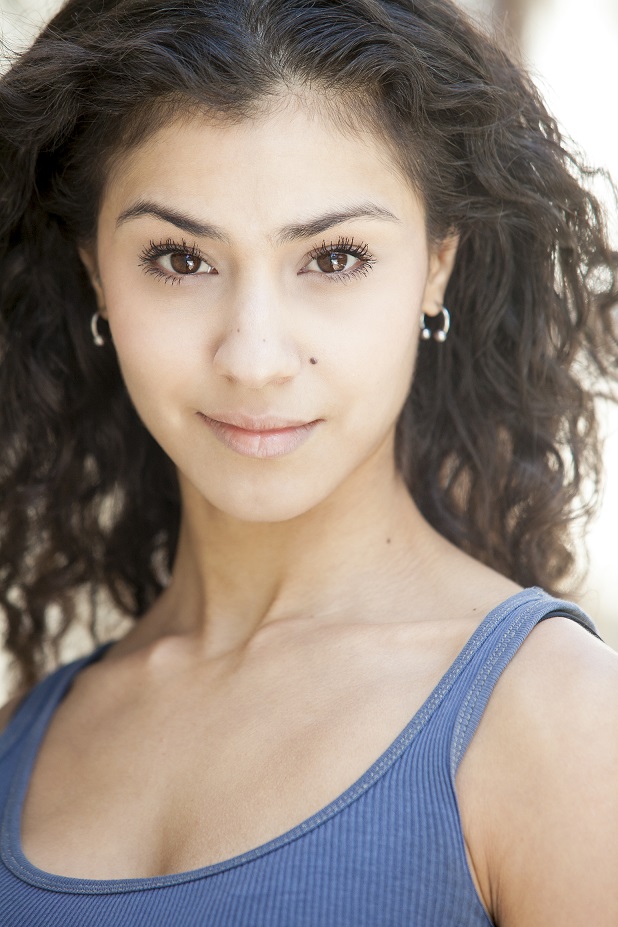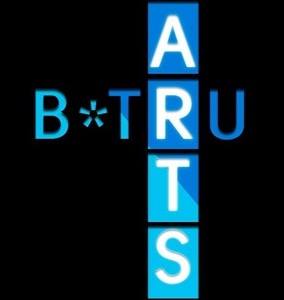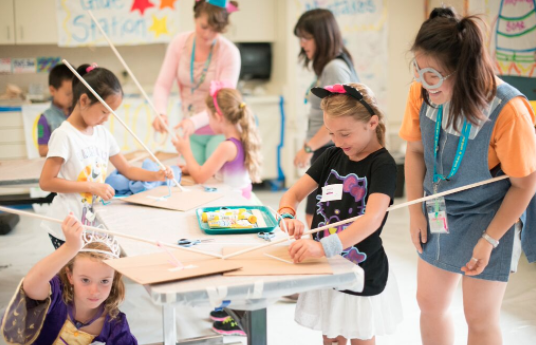Encouraging Students to B*Tru with Aisha Melhem
Encourging Students to B*Tru with Aisha Melhem
By Danielle Echols
As a company, we know the value of bringing arts education to our community. We are so excited when we encounter other organizations that do the same, particularly when these organizations help young people. It is through art that young people can learn how to interpret the world around them. They learn valuable skills that will help them both personally and professionally. There is no greater example of an organization succeeding in this work, than Austin-based nonprofit, B*Tru Arts.
Aisha Melhem is the Artistic Director and Founder B*Tru Arts. Her multifaceted multicultural organization focuses on using the arts for the betterment of the community. As a child in Austin she trained in several styles of dance, theatre and voice. She received a Bachelor of Arts in Theatre with an emphasis in acting with honors from St. Edward's University, Austin, Texas in 2008 and a Master of Arts in Theatre with an emphasis in directing from Texas State University, San Marcos, Texas in 2010.
According to their mission: "B*Tru Arts aims to make a positive impact upon the greater Austin community by creating and providing immersive experiences in the arts. B*Tru Arts carries out its mission by holding public events and showcases, providing high-quality arts education, expanding performance opportunities for local artists and assisting local artists in the production of their works. B*Tru Arts serves to strengthen the local artistic community through hands-on support, artistic and cultural diversity, formal education and interaction with the public."
Recently, Aisha gave us a little insight about her life and why she decided to start the organization.
When did you first recognize your interests in the arts?
When I was 3 years old. I started dancing at the age of three and always loved to sing. I was accidentally placed in an acting class my 6th grade year and continued to take theatre throughout high school and college. Here's a little more of the story:
I started studying theatre and acting at the age of 11. In fact it was an accident that I was put in theatre class. I signed up for choir and the school put me in theatre. I remember my first theatre teacher Mr. Smith (Dale Smith) and my 2nd theatre teacher Mrs. Alexander. Because of how passionate he was and how great of teacher he was I began to feel the same as he did for theatre and performance. I believe that is when I knew this was for me. I continued on in high school and later in college and graduate school. I started out as an actor and then later developed the love of directing and teaching. I believe my teachers made me love it and I wanted to do the same for others as they did for me.
As a theatre student in under grad and graduate school we studied theatre history, various acting styles and techniques, different directing methods and approaches etc... During and after school I was able to develop my own approach and methodology that incorporates:
-The use of more physicality “actions speak louder than words” as said by Plato
-Emphasis on collaboration/co-creation/originality
-Inspiration from Experimental theatre, such as: “Open Theater” techniques used in creative process
-More emphasis on the creative process-The journey in creating is very important for actors and everyone involved. Theatre is therapeutic.
-This allows the ensemble to discover new things through exercises focusing on high physicality and ensemble building.
-The use of the whole space not just stage, so that the audience feels as if they are part of the world. This can impact more, allow audience to have a visceral reaction, and a better understanding of the (subject, character, culture, etc...)
-Site specific work, street theatre (take performance to the community)
-Taking something traditional and reconstructing it- experimental adaptations (reconstruction of the play is the message it symbolizes the topic that would be presented)
-The use of theatre as a tool to bring awareness of social issues and self-awareness. The audience will leave thinking about what they just saw and themselves. This will possibly lead to social change and better society.
-Collective theater works with writers, director, and actors to come up with original organic and engaging performance pieces.
When you were in college at St. Edwards University, what type of career did you imagine you would have?
I thought that I would end up teaching college level theatre. I never imagined that I would start a nonprofit.
How did the idea of B*Tru Arts emerge?
I've always been driven by my passion for the arts and my true purpose in life, which is to help others and to educate and inspire the community through the arts as well as promoting positive social change. It started with the first annual Inspiro Fest and evolved into what it is today.
I notice B*Tru Arts does a wide range of amazing activities (photography, videography,
performance, screenwriting coverage), why did you decide to incorporate so many different
fields as oppose to focusing on just one?
Through our work we are creating more job opportunities for local artists when we offer a variety of services. Also, many artists need affordable headshots or actor reels etc...
Through our educational programs, we are not only involved in every single aspect of the development and representation of the arts in its truest form but also allowing true innovation to overflow in that of the individual naturally impacting our community.
Do you feel like the arts teaches self-acceptance? If so, how?
Yes, absolutely! Arts education gives students the opportunity to express themselves creatively and it also creates a safe environment for them to take risks. It also helps build a sense of ensemble when everyone is working towards the same goal. This creates a sense of secure acceptance and helps the individual feel like they are part of a community. It helps build trust and it also helps develop interpersonal and social skills etc. A lot of what you learn in the arts is applicable to everyday life.
If there was one main lesson students could learn from B*Tru Arts, what would you and your team want that to be?
Always Be True to yourself.
What are some words/advice that have really inspired you throughout your journey?
“You don’t grow in comfort” “Follow your heart” “Never give up” “Just do it”
For more information on B*Tru Arts visit the links below. They are one of the sponsors for our Acceptance Tour in Austin:
Website: BTru Arts
Facebook: @BTRUARTS
Twitter: @B_TRU_ARTS
Instagram: @btruarts
YouTube: Delusions of Despair




